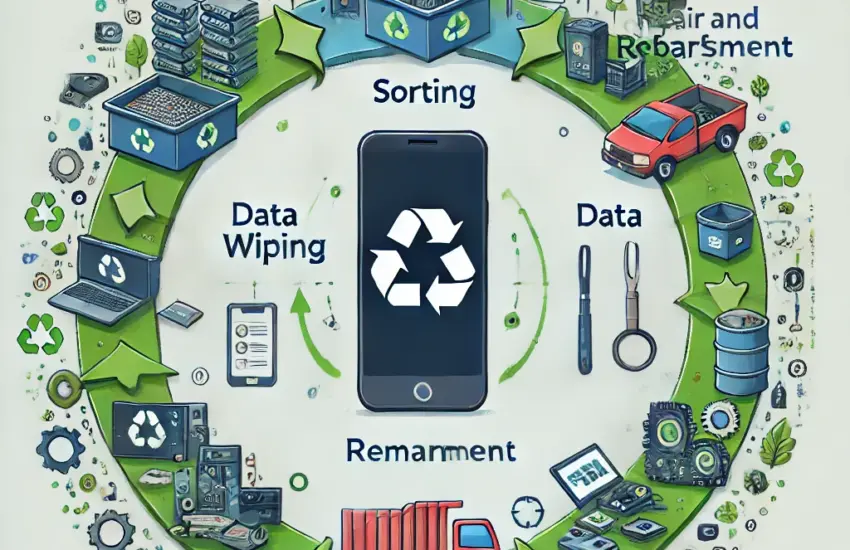When you recycle your phone, you’re doing more than just clearing out a drawer—you’re giving that device a new lease on life. But have you ever wondered what actually happens after you drop off your old smartphone or trade it in? Here’s a look into the lifecycle of a recycled phone and the journey it takes from your hands to a sustainable future.
1. Step 1: Collection and Sorting
The first stop in a recycled phone’s journey is collection. Devices can be dropped off at various recycling centers, donation points, or returned through trade-in programs like Gbuyback.com. Once received, phones are sorted based on their brand, model, and overall condition. This sorting process is key to determining whether a device is fit for refurbishment or recycling.
If a phone is still functional or can be repaired, it might be headed for refurbishment and resale. If not, it goes on to be disassembled and recycled for its valuable components.
2. Step 2: Data Wiping and Security
Data security is a major focus in the phone recycling process, and before any device moves forward, data wiping is performed to ensure all personal information is removed. Reputable platforms like Gbuyback.com have strict data-erasing protocols to safeguard your information. Once data is fully erased, the device is ready to continue its journey.
3. Step 3: Repair and Refurbishment
Many recycled phones that are still in good condition undergo repair and refurbishment. This can involve anything from replacing the battery and screen to updating software and addressing minor defects. Once repaired, these phones are given a second life and sold as “certified refurbished” devices, often at a reduced price. Not only does this make tech more affordable, but it also keeps devices out of landfills, extending their useful lives.
4. Step 4: Dismantling and Material Recovery
If a phone isn’t fit for resale or refurbishment, it moves into the dismantling phase. Skilled technicians disassemble the phone to separate its components. The primary materials targeted are metals like copper, gold, silver, and aluminum, as well as rare earth elements such as lithium and cobalt used in batteries. These valuable materials can be extracted and refined, then used in new products or future electronics.
5. Step 5: Environmental Recycling and Disposal
Unfortunately, not every part of a phone can be recycled or reused. Certain components, like some types of plastics or obsolete parts, are responsibly disposed of according to strict environmental regulations. Certified recycling facilities work to ensure these components are disposed of safely, minimizing pollution and reducing the impact on the environment.
6. Step 6: Reuse and Rebirth
Finally, the recycled materials recovered from your phone are processed and reintegrated into the supply chain. Gold, silver, and copper might find their way into a new electronic device, while recovered plastics and glass could become part of new consumer products. In this way, your old phone contributes to a circular economy, helping reduce the demand for raw materials and lowering the environmental impact of producing new devices.
Why Choose Gbuyback.com for Recycling?
At Gbuyback.com, we understand that every device has value and that recycling is more than just disposal—it’s about creating a sustainable future. With a focus on data security, efficient refurbishment, and responsible recycling, Gbuyback.com ensures that your device’s lifecycle continues in the most eco-friendly way possible.
So, the next time you upgrade, think about where your old phone could go and the impact it could have. Recycle your phone today, and become a part of the solution for a greener tomorrow. 🌱♻️


